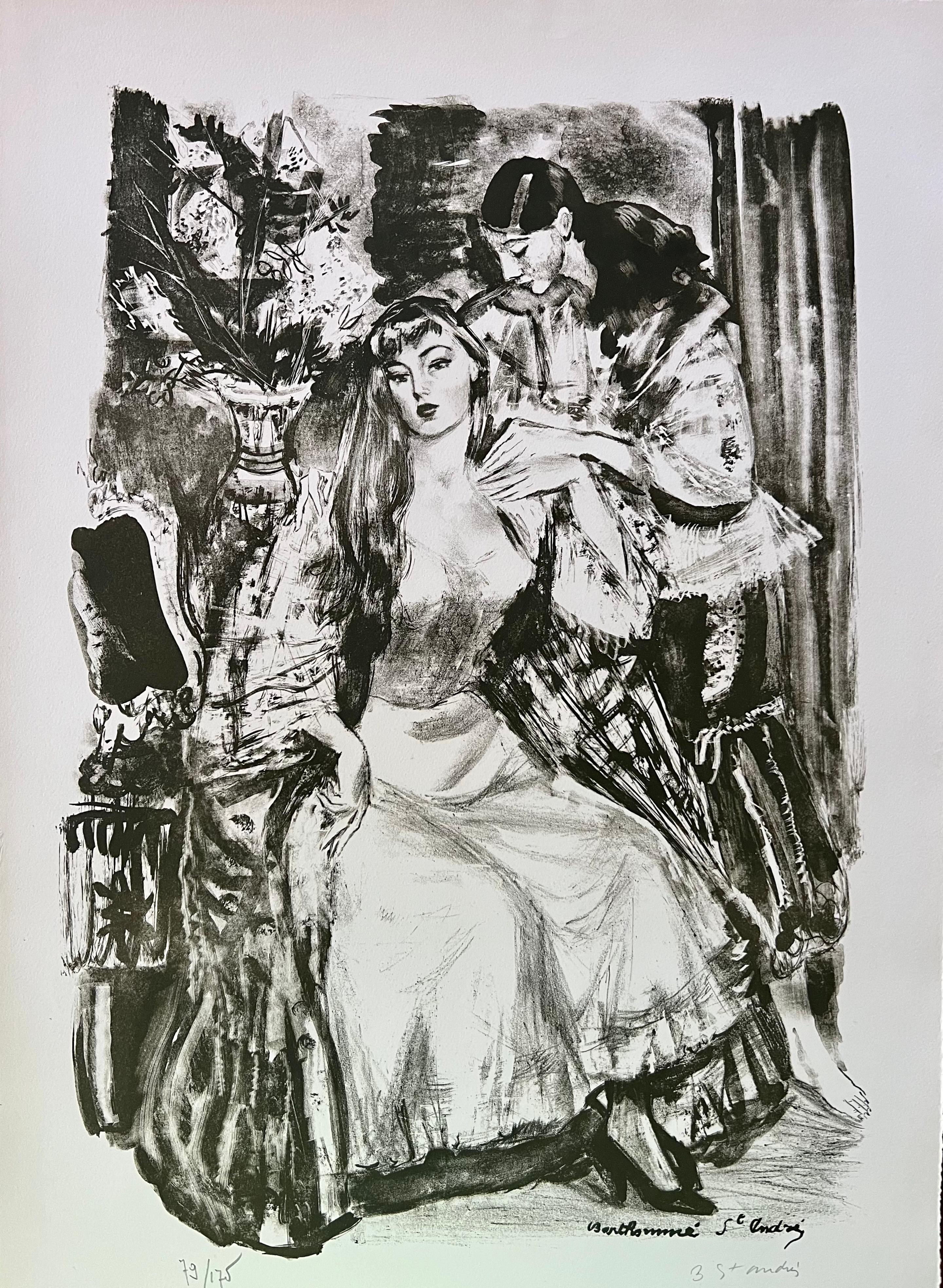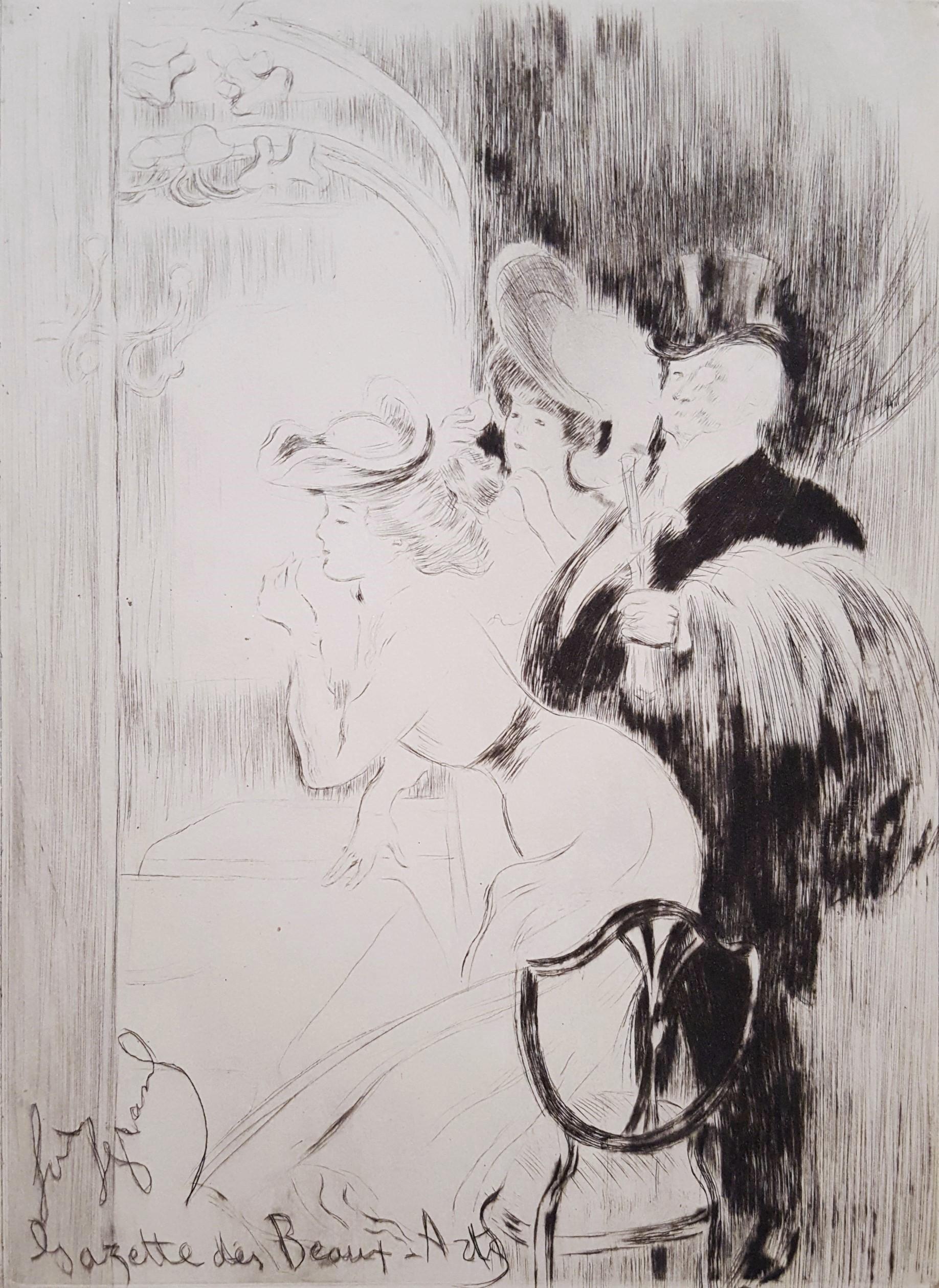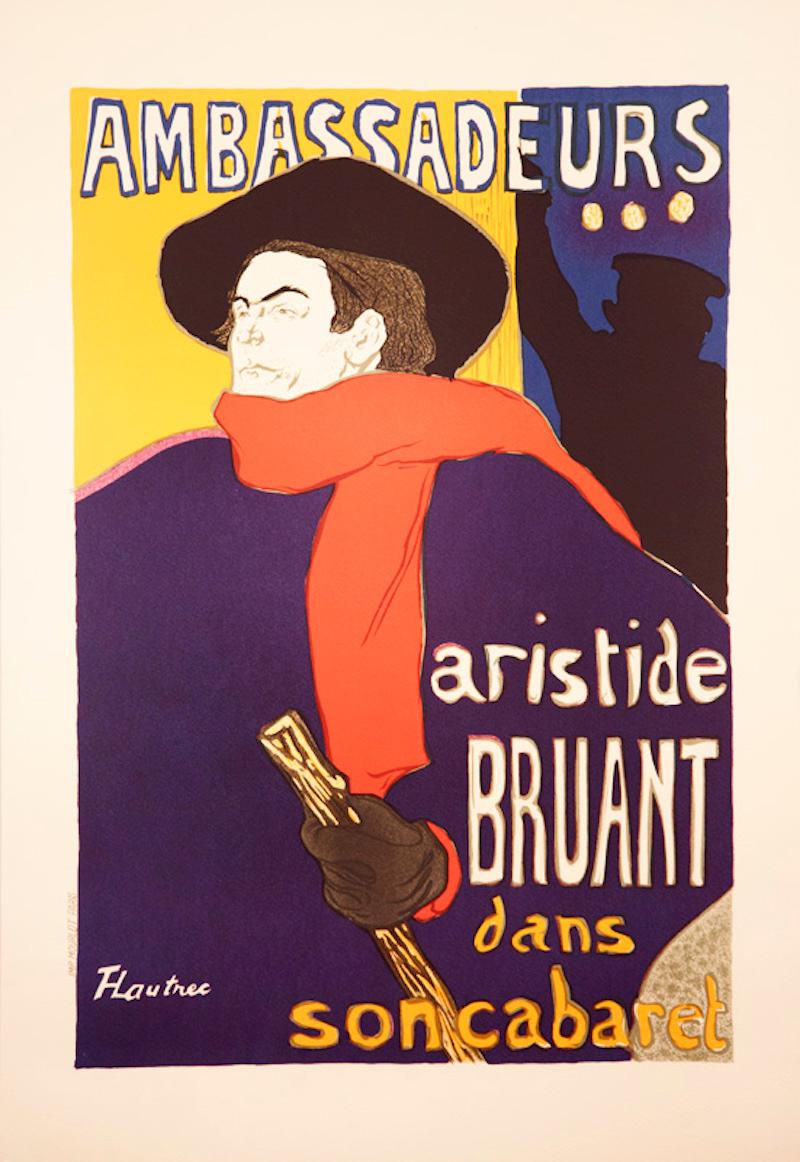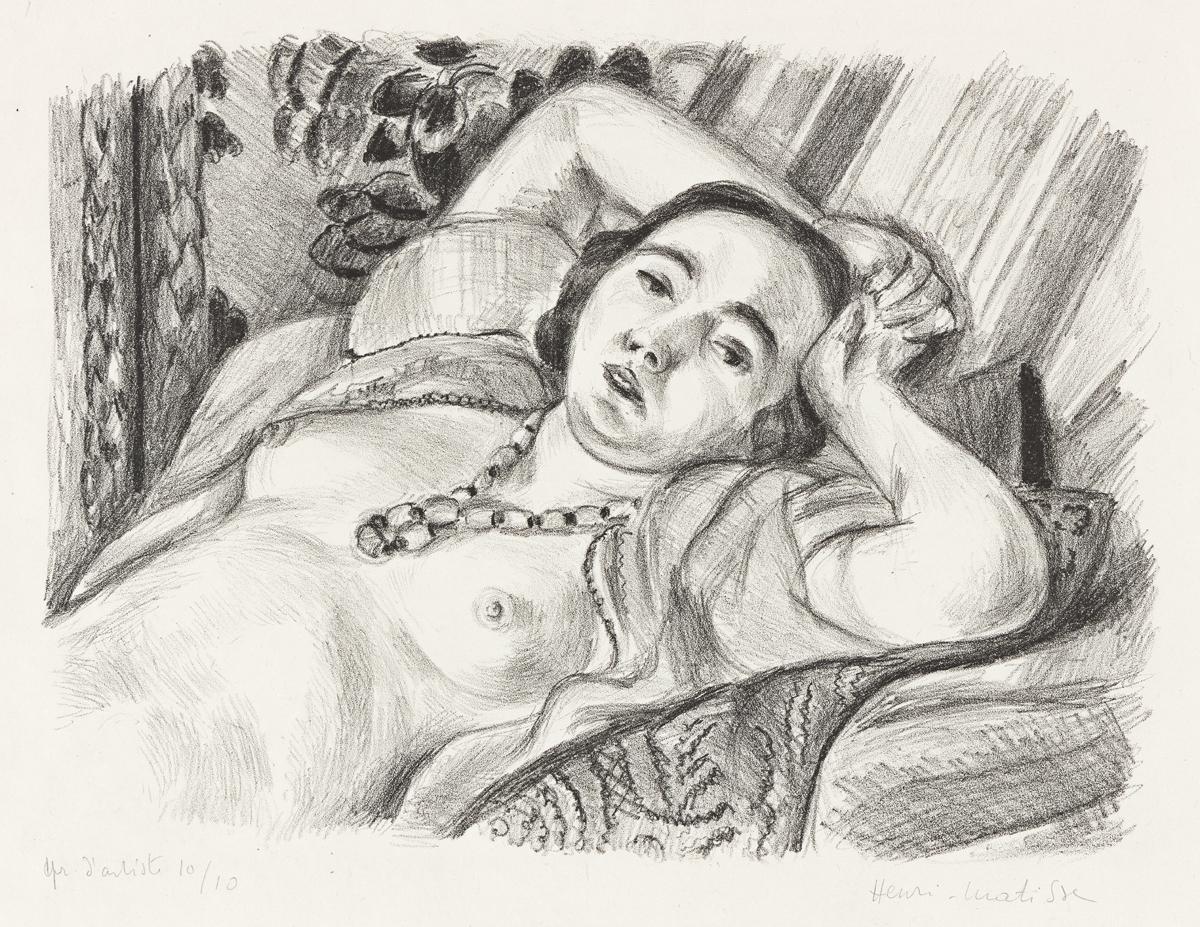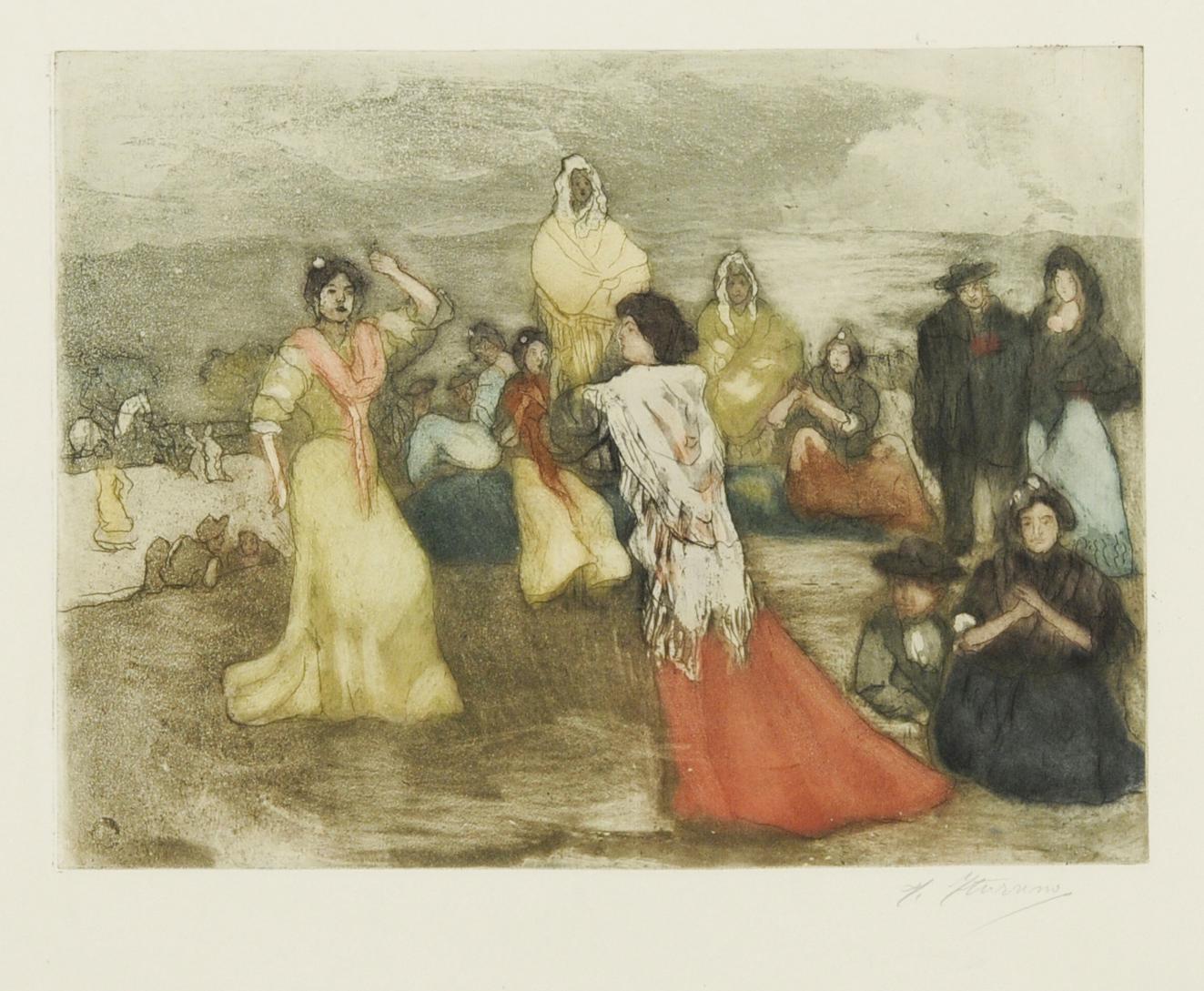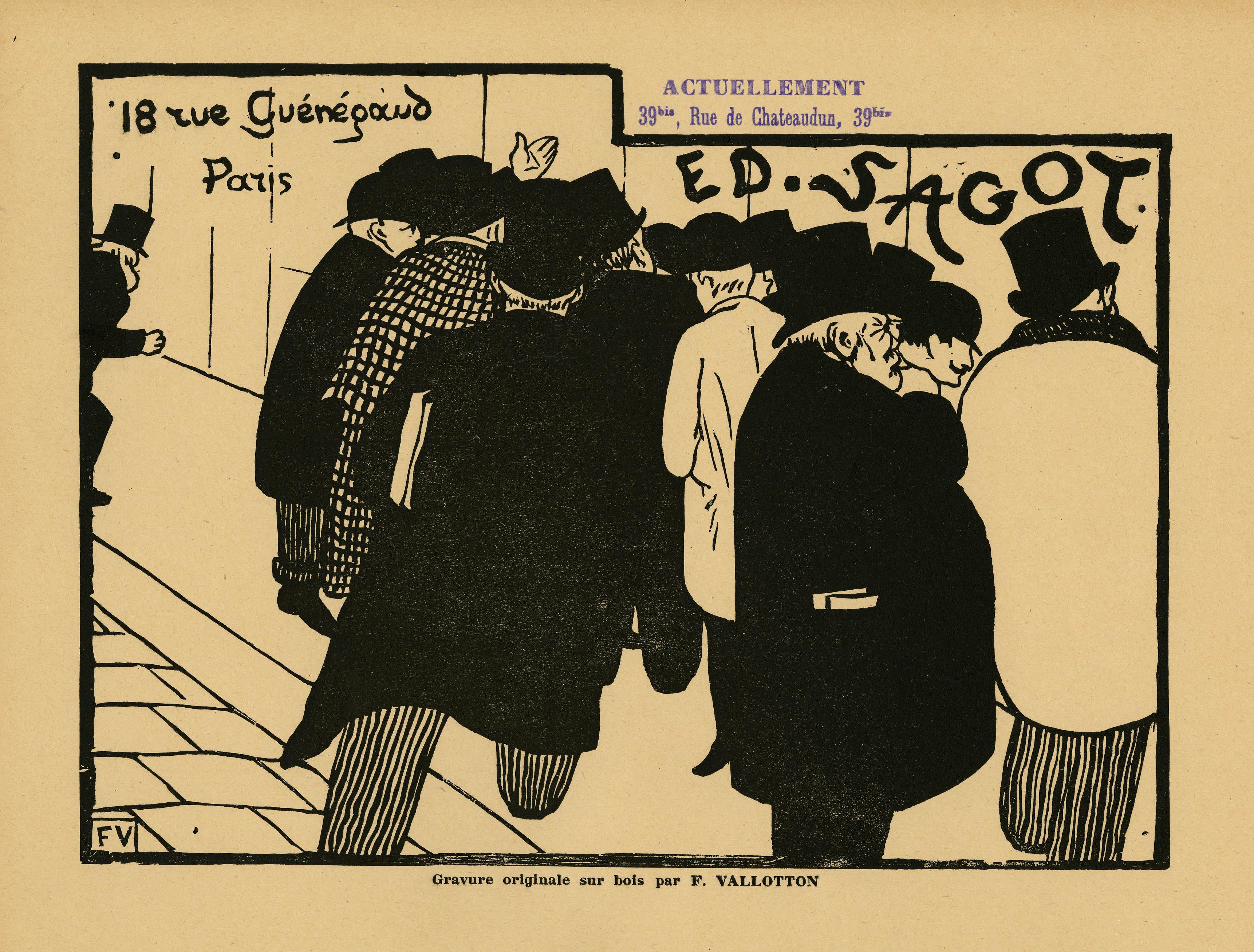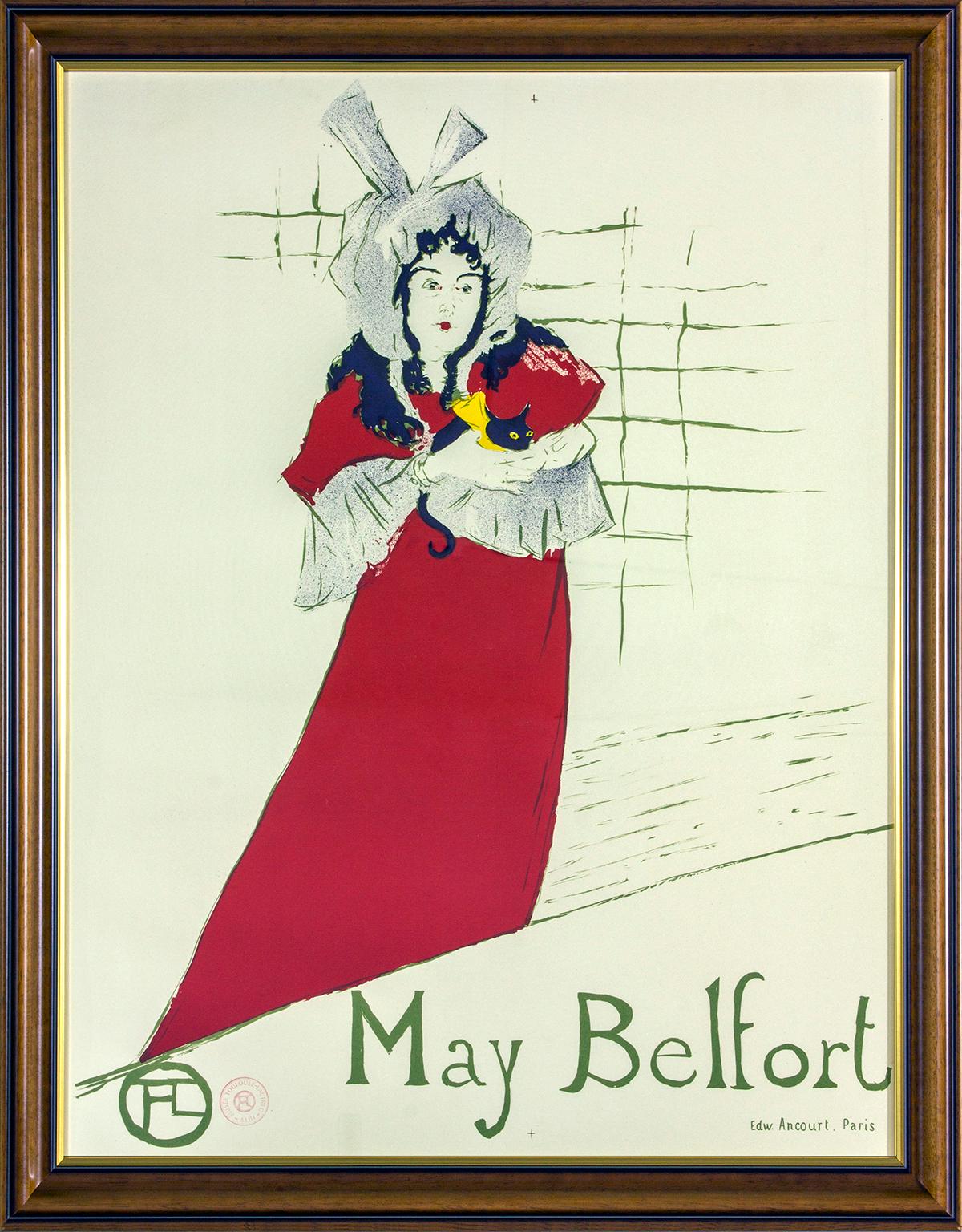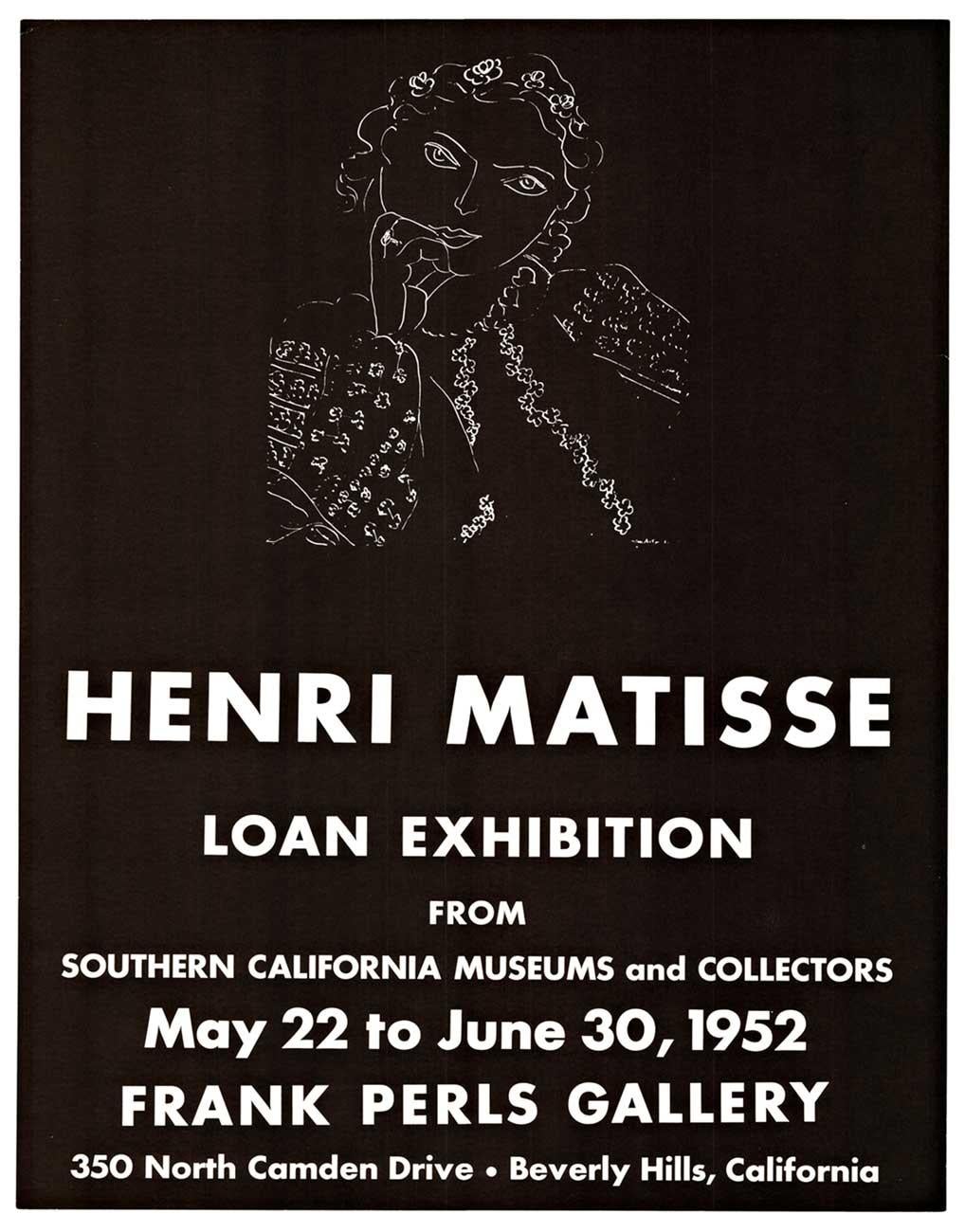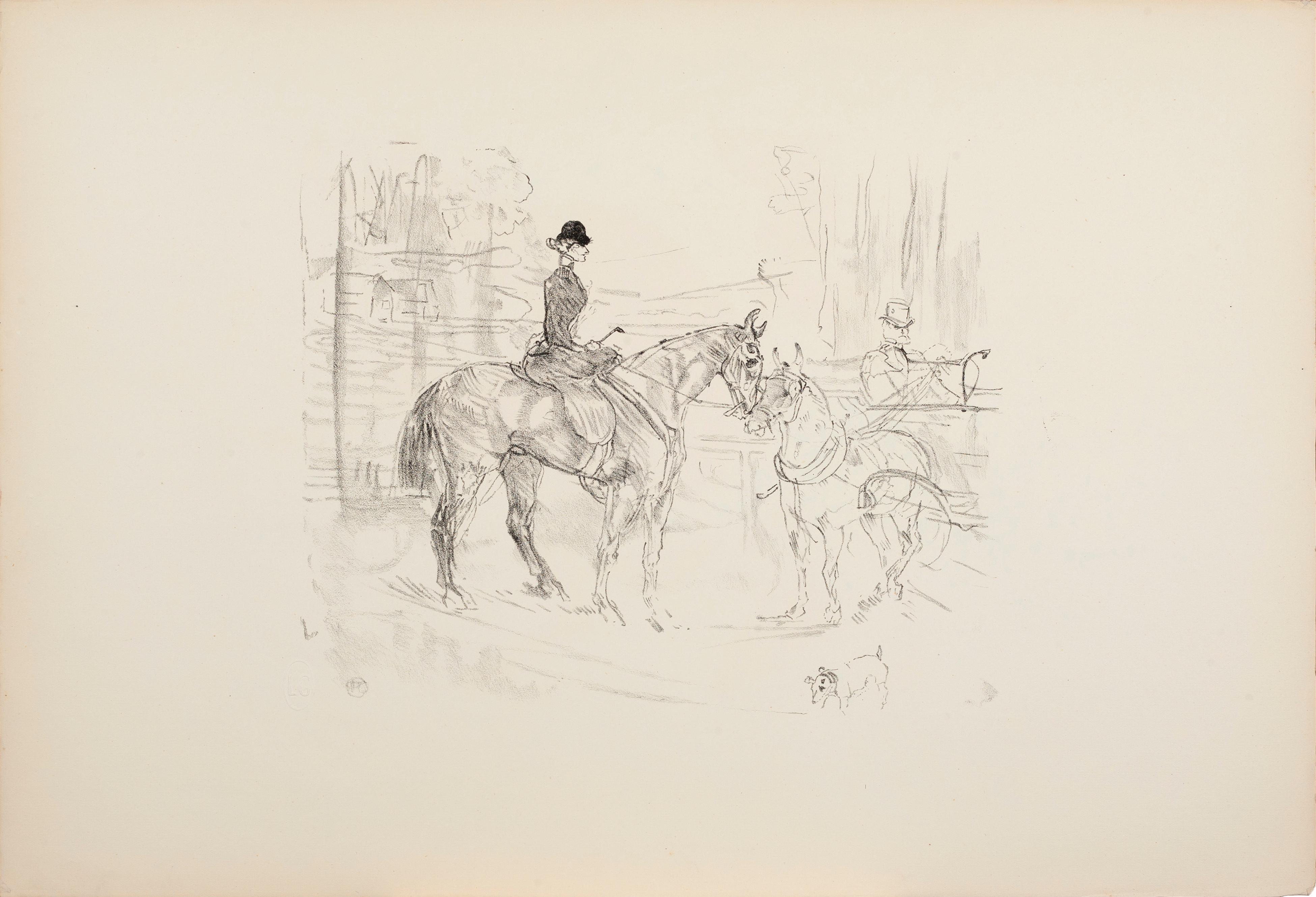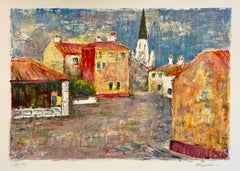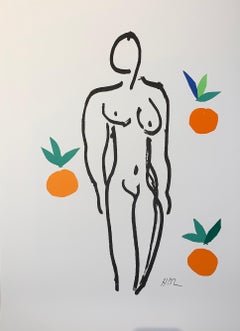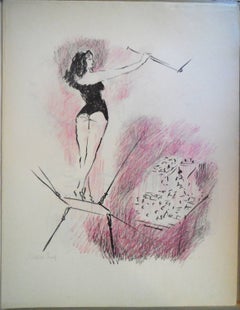
Circus Trapeze Acrobat
View Similar Items
Want more images or videos?
Request additional images or videos from the seller
1 of 7
Marcel VertèsCircus Trapeze Acrobat
About the Item
- Creator:Marcel Vertès (1895 - 1961, Hungarian)
- Dimensions:Height: 22.38 in (56.85 cm)Width: 17.38 in (44.15 cm)
- Movement & Style:
- Period:
- Condition:minor age wear around edges. these have never been framed.
- Gallery Location:Surfside, FL
- Reference Number:1stDibs: LU382416212
About the Seller
4.9
Platinum Seller
These expertly vetted sellers are 1stDibs' most experienced sellers and are rated highest by our customers.
Established in 1995
1stDibs seller since 2014
1,550 sales on 1stDibs
Typical response time: 1 hour
More From This SellerView All
- Circus Trapeze AcrobatBy Marcel VertèsLocated in Surfside, FLThis is an original hand signed (I believe it is also hand colored but i am not positive) Artists Proof Lithograph of a Circus scene. This depicts a trapeze artist an acrobat on the ...Category
1940s Post-Impressionist Figurative Prints
MaterialsLithograph
- Pierre Bonnard Ltd Ed Lithograph Printed at Mourlot Paris 1958 Father and SonBy Pierre BonnardLocated in Surfside, FLThis is from a limited edition portfolio of original lithographs print Fernand Mourlot in Paris in 1958 from work done in collaboration with Bonnard which began in 1928. This is from the rare first edition, No. VII of 20 unbound sets, specially printed for Hans P. Kraus, with Henry de Montherlant inscription to him signed and dated March 3, 1960 These are not individually hand signed or numbered. On BFK Rives French velin art paper Pierre Bonnard (1867 – 1947) was a French painter, illustrator and printmaker, known especially for the stylized decorative qualities of his paintings and his bold use of color. A founding member of the Post-Impressionist group of avant-garde painters Les Nabis, (the Naive artists) his early work was strongly influenced by the work of Paul Gauguin, as well as the prints of Hokusai and other Japanese artists. Bonnard was a leading figure in the transition from Impressionism to Modernism. He painted landscapes, urban scenes, portraits and intimate domestic scenes, where the backgrounds, colors and painting style usually took precedence over the subject. Pierre Bonnard was born in Fontenay-aux-Roses, Hauts-de-Seine on 3 October 1867. His mother, Élisabeth Metzdorff, was from Alsace. His father, Eugène Bonnard, was from the Dauphiné, and was a senior official in the French Ministry of War. He had a brother, Charles, and a sister, Andrée, who in 1890 married the composer Claude Terrasse. He received his education in the Lycée Louis-le-Grand and Lycée Charlemagne in Vanves. He showed a talent for drawing and water colors, as well as caricatures. He painted frequently in the gardens of his parent's country home at Grand-Lemps near the Cote Saint-André in the Dauphiné. He also showed a strong interest in literature. He received his baccalaureate in the classics, and, to satisfy his father, between 1886 and 1887 earned his license in law, and began practicing as a lawyer beginning in 1888. While he was studying law, he also attended art classes at the Académie Julian in Paris. At the Académie Julien he met his future friends and fellow artists, Paul Sérusier, Maurice Denis, Gabriel Ibels and Paul Ranson. In 1888 Bonnard was accepted by the École des Beaux-Arts, where he met Édouard Vuillard and Ker Xavier Roussel. He also sold his first commercial work of art, a design for poster for France-Champagne, which helped him convince his family that he could make a living as an artist. He set up his first studio at on rue Lechapelais and began his career as an artist. From 1893 until her death, Bonnard lived with Marthe de Méligny (1869–1942), and she was the model for many of his paintings, including many nude works. Her birth name was Maria Boursin, but she had changed it before she met Bonnard. They married in 1925. In the years before their marriage, Bonnard had love affairs with two other women, who also served as models for some of his paintings, Renée Monchaty (the partner of the American painter Harry Lachmann) and Lucienne Dupuy de Frenelle, the wife of a doctor; it has been suggested that Bonnard may have been the father of Lucienne's second son. Renée Monchaty committed suicide shortly after Bonnard and de Méligny married. In 1891 he met Toulouse-Lautrec and in December 1891 showed his work at the annual exhibition of the Société des Artistes Indépendants. In the same year Bonnard also began an association with La Revue Blanche, for which he and Edouard Vuillard designed frontispiece In March 1891, his work was displayed with the work of the other Nabis at the Le Barc de Boutteville. The style of Japanese graphic arts became an important influence on Bonnard. In 1893 a major exposition of works of Utamaro and Hiroshige was held at the Durand-Rouel Gallery, and the Japanese influence, particularly the use of multiple points of view, and the use of bold geometric patterns in clothing, such as checkered blouses, began to appear in his work. Because of his passion for Japanese art, his nickname among the Nabis became Le Nabi le trés japonard. He devoted an increasing amount of attention to decorative art, designing furniture, fabrics, fans and other objects. He continued to design posters for France-Champagne, which gained him an audience outside the art world. In 1892 he began to produce lithographs, and painted two of his early notable works, Le Corsage a carreaux and La Partie de croquet. He also made a series of illustrations for the music books of his brother-in-law, Claude Terrasse. In 1895 he became an early participant of the movement of Art Nouveau, designing a stained glass window, called Maternity, for Tiffany. In 1895 he had his first individual exposition of paintings, posters and lithographs at the Durand-Ruel Gallery. He also illustrated a novel, Marie, by Peter Nansen, published in series by in La Revue Blanche. The following year he participated in a group exposition of Nabis at the Ambroise Vollard Gallery. In 1899, he took part in another major exposition of works of the Nabis. Throughout the early 20th century, as artistic styles appeared and disappeared with almost dizzying speed, Bonnard kept refining and revising his personal style, and exploring new subjects and media, but keeping the distinct characteristics of his work. Working in his studio at 65 rue de Douai in Paris, he presented paintings at the Salon des Independents in 1900, and also made 109 lithographs for Parallèment, a book of poems by Verlaine. He also took part in an exhibition with the other Nabis at the Bernheim Jeune gallery. He presented nine paintings at the Salon des Independents in 1901. In 1905 he produced a series of nudes and of portraits, and in 1906 had a personal exposition at the Bernheim-Jeune Gallery. In 1908 he illustrated a book of poetry by Octave Mirbeau, and made his first long stay in the South of France, at the home of the painter Manguin in Saint-Tropez. in 1909, and in 1911 began a series of decorative panels, called Méditerranée, for the Russian art patron Ivan Morozov. During the years of the First World War, Bonnard concentrated on nudes and portraits, and in 1916 completed a series of large compositions, including La Pastorale, Méditterranée, La Paradis Terreste and Paysage de Ville. His reputation in the French art establishment was secure; in 1918 he was selected, along with Renoir, as an honorary President of the Association of Young French Artists. In the 1920s, he produced illustrations for a book by Andre Gide (1924) and another by Claude Anet (1923). He showed works at the Autumn Salon in 1923, and in 1924 was honored with a retrospective of sixty-eight of his works at the Galerie Druet. In 1925 he purchased a villa in Cannes. In 1938 his works and Vuillard were featured at an exposition at the Art Institute of Chicago. The outbreak of World War II in September 1939, forced Bonnard to depart Paris for the south of France, where he remained until the end of the war. Under the German occupation, he refused to paint an official portrait of the French collaborationist leader, Marechal Petain, but accepted a commission to paint a religious painting of Saint Francis de Sales, with the face of his friend Vuillard, who had died two years earlier. He finished his last painting, The Almond Tree in Blossom, a week before his death in his cottage on La Route de Serra Capoue near Le Cannet, on the French Riviera, in 1947. The Museum of Modern Art in New York City organized a posthumous retrospective of Bonnard's work in 1948, although originally it was meant to be a celebration of the artist's 80th birthday. Bonnard particularly used the model of Japanese art in a series...Category
20th Century Post-Impressionist More Prints
MaterialsLithograph
- Japanese Woodblock Artist French Lithograph Fauvist Colors School of ParisBy Shungo SekiguchiLocated in Surfside, FLShungo Sekiguchi, (Japanese, 1911-2002): Lithograph in color on Rives paper Hand signed in pencil lower right, hand numbered It appears to be the village of Montmarte in Paris This was published by the Guilde de la Gravure, Paris, France and bears their GG blindstamp. They were a mid century French art publisher and published many masters including Raoul Dufy, Max Erns, Jean Hans Arp, Ruffino Tamayo, Balthus, Gino Severini and Leonard Tsuguharu Foujita. Shungo Sekiguchi was born 1911 in Japan. In 1932 Shungo Sekiguchi contributed to the print series "One Hundred Views of Great Tokyo" (Dai Tokyo hyakkei). Prints from watercolors published by Kaneda Shoten (Nihon Hanga Ken-kyusho). In 1935, Sekiguchi moved to Paris, France to study at the prestigious Ecole des Beaux Art of France with a scholarship of the French government. He studied together with two other Ecole de Paris Japanese artists, Takanori Ogisu and Tsuguji Foujita. He exhibited at the prestigious "Salon d'Automne" in Paris. In 1940 when Paris was occupied by the German Nazis, Shungo Sekiguchi returned to Japan, but kept his ties with France. In 1952 he exhibited at the famous Salon d'Automne and received an award. In 1959, he received an award at the Vicci International Art Contest. In 1964, he received the Diplome d'Honneur des at Jobiji International Art Show. His retrospective exhibition has been held in many places in Japan. In 2002 the artist died in Japan. He is popular in Japan and several retrospective exhibitions were held in Japan. He was part of the Shin Hanga and Sosaku Hanga woodblock artists known for their woodcut prints and scrolls. Shin-hanga was an art movement in early 20th-century Japan, during the Taisho and Showa periods, that revitalized traditional ukiyo-e art rooted in the Edo and Meiji periods. He also worked as a book illustrator and did the artwork for the French edition of Le démon doré by Ozaki Kohyo. He is included in Helen Merritt and Nanako Yamada's classic book "Guide to Modern Japanese Woodblock...Category
1950s Post-Impressionist Landscape Prints
MaterialsLithograph
- Pierre Bonnard Lithograph Printed at Mourlot Paris 1958 Mosque Minaret, VillageBy Pierre BonnardLocated in Surfside, FLThis is from a limited edition portfolio of original lithographs print Fernand Mourlot in Paris in 1958 from work done in collaboration with Bonnard which began in 1928. A walled city with a mosque with a minaret with Arabs standing in the foreground. This is from the rare first edition, No. VII of 20 unbound sets, specially printed for Hans P. Kraus, with Henry de Montherlant inscription to him signed and dated March 3, 1960 These are not individually hand signed or numbered. On BFK Rives French velin art paper Pierre Bonnard (1867 – 1947) was a French painter, illustrator and printmaker, known especially for the stylized decorative qualities of his paintings and his bold use of color. A founding member of the Post-Impressionist group of avant-garde painters Les Nabis, (the Naive artists) his early work was strongly influenced by the work of Paul Gauguin, as well as the prints of Hokusai and other Japanese artists. Bonnard was a leading figure in the transition from Impressionism to Modernism. He painted landscapes, urban scenes, portraits and intimate domestic scenes, where the backgrounds, colors and painting style usually took precedence over the subject. Pierre Bonnard was born in Fontenay-aux-Roses, Hauts-de-Seine on 3 October 1867. His mother, Élisabeth Metzdorff, was from Alsace. His father, Eugène Bonnard, was from the Dauphiné, and was a senior official in the French Ministry of War. He had a brother, Charles, and a sister, Andrée, who in 1890 married the composer Claude Terrasse. He received his education in the Lycée Louis-le-Grand and Lycée Charlemagne in Vanves. He showed a talent for drawing and water colors, as well as caricatures. He painted frequently in the gardens of his parent's country home at Grand-Lemps near the Cote Saint-André in the Dauphiné. He also showed a strong interest in literature. He received his baccalaureate in the classics, and, to satisfy his father, between 1886 and 1887 earned his license in law, and began practicing as a lawyer beginning in 1888. While he was studying law, he also attended art classes at the Académie Julian in Paris. At the Académie Julien he met his future friends and fellow artists, Paul Sérusier, Maurice Denis, Gabriel Ibels and Paul Ranson. In 1888 Bonnard was accepted by the École des Beaux-Arts, where he met Édouard Vuillard and Ker Xavier Roussel. He also sold his first commercial work of art, a design for poster for France-Champagne, which helped him convince his family that he could make a living as an artist. He set up his first studio at on rue Lechapelais and began his career as an artist. From 1893 until her death, Bonnard lived with Marthe de Méligny (1869–1942), and she was the model for many of his paintings, including many nude works. Her birth name was Maria Boursin, but she had changed it before she met Bonnard. They married in 1925. In the years before their marriage, Bonnard had love affairs with two other women, who also served as models for some of his paintings, Renée Monchaty (the partner of the American painter Harry Lachmann) and Lucienne Dupuy de Frenelle, the wife of a doctor; it has been suggested that Bonnard may have been the father of Lucienne's second son. Renée Monchaty committed suicide shortly after Bonnard and de Méligny married. In 1891 he met Toulouse-Lautrec and in December 1891 showed his work at the annual exhibition of the Société des Artistes Indépendants. In the same year Bonnard also began an association with La Revue Blanche, for which he and Edouard Vuillard designed frontispiece In March 1891, his work was displayed with the work of the other Nabis at the Le Barc de Boutteville. The style of Japanese graphic arts became an important influence on Bonnard. In 1893 a major exposition of works of Utamaro and Hiroshige was held at the Durand-Rouel Gallery, and the Japanese influence, particularly the use of multiple points of view, and the use of bold geometric patterns in clothing, such as checkered blouses, began to appear in his work. Because of his passion for Japanese art, his nickname among the Nabis became Le Nabi le trés japonard. He devoted an increasing amount of attention to decorative art, designing furniture, fabrics, fans and other objects. He continued to design posters for France-Champagne, which gained him an audience outside the art world. In 1892 he began to produce lithographs, and painted two of his early notable works, Le Corsage a carreaux and La Partie de croquet. He also made a series of illustrations for the music books of his brother-in-law, Claude Terrasse. In 1895 he became an early participant of the movement of Art Nouveau, designing a stained glass window, called Maternity, for Tiffany. In 1895 he had his first individual exposition of paintings, posters and lithographs at the Durand-Ruel Gallery. He also illustrated a novel, Marie, by Peter Nansen, published in series by in La Revue Blanche. The following year he participated in a group exposition of Nabis at the Ambroise Vollard Gallery. In 1899, he took part in another major exposition of works of the Nabis. Throughout the early 20th century, as artistic styles appeared and disappeared with almost dizzying speed, Bonnard kept refining and revising his personal style, and exploring new subjects and media, but keeping the distinct characteristics of his work. Working in his studio at 65 rue de Douai in Paris, he presented paintings at the Salon des Independents in 1900, and also made 109 lithographs for Parallèment, a book of poems by Verlaine. He also took part in an exhibition with the other Nabis at the Bernheim Jeune gallery. He presented nine paintings at the Salon des Independents in 1901. In 1905 he produced a series of nudes and of portraits, and in 1906 had a personal exposition at the Bernheim-Jeune Gallery. In 1908 he illustrated a book of poetry by Octave Mirbeau, and made his first long stay in the South of France, at the home of the painter Manguin in Saint-Tropez. in 1909, and in 1911 began a series of decorative panels, called Méditerranée, for the Russian art patron Ivan Morozov. During the years of the First World War, Bonnard concentrated on nudes and portraits, and in 1916 completed a series of large compositions, including La Pastorale, Méditterranée, La Paradis Terreste and Paysage de Ville. His reputation in the French art establishment was secure; in 1918 he was selected, along with Renoir, as an honorary President of the Association of Young French Artists. In the 1920s, he produced illustrations for a book by Andre Gide (1924) and another by Claude Anet (1923). He showed works at the Autumn Salon in 1923, and in 1924 was honored with a retrospective of sixty-eight of his works at the Galerie Druet. In 1925 he purchased a villa in Cannes. In 1938 his works and Vuillard were featured at an exposition at the Art Institute of Chicago. The outbreak of World War II in September 1939, forced Bonnard to depart Paris for the south of France, where he remained until the end of the war. Under the German occupation, he refused to paint an official portrait of the French collaborationist leader, Marechal Petain, but accepted a commission to paint a religious painting of Saint Francis de Sales...Category
20th Century Post-Impressionist More Prints
MaterialsLithograph
- Lithograph Lady Rider Woman on a Horse Marie Laurencin French Post ImpressionistBy Marie LaurencinLocated in Surfside, FLMarie Laurencin (French, 1883-1956) Lithograph of a colored pencil drawing depicting a woman wearing a hat and riding horseback side saddle, Edition "37/115" to lower left and hand signed "Laurencin" in pencil to lower right, with a cloth mat and housed in a silvered wood frame. Dimensions: Image, 12" H x 16" W; frame, 19.75" H x 23.5" W x 1.5" D. Marie Laurencin (1883 – 1956) was a French painter and printmaker. She became an important figure in the Parisian avant-garde as a member of the Cubists associated with the Section d'Or. Laurencin was born in Paris, where she was raised by her mother and lived much of her life. At 18, she studied porcelain painting in Sèvres. She then returned to Paris and continued her art education at the Académie Humbert, where she changed her focus to oil painting. During the early years of the 20th century, Laurencin was an important figure in the Parisian avant-garde. A member of both the circle of Pablo Picasso, and Cubists associated with the Section d'Or, such as Jean Metzinger, Albert Gleizes, Robert Delaunay, Henri le Fauconnier and Francis Picabia, exhibiting with them at the Salon des Indépendants (1910-1911) and the Salon d'Automne (1911-1912), and Galeries Dalmau (1912) at the first Cubist exhibition in Spain. She became romantically involved with the poet Guillaume Apollinaire, and has often been identified as his muse. In addition, Laurencin had important connections to the salon of the American expatriate and lesbian writer Natalie Clifford Barney. She had relationships with men and women, and her art reflected her life, her "balletic wraiths" and "sidesaddle Amazons" providing the art world with her brand of "queer femme with a Gallic twist." Laurencin's oeuvre include painting, watercolor paintings, drawing, and prints. She is known as one of the few female Cubist painters, with Sonia Delaunay, Marie Vorobieff, and Franciska Clausen...Category
Mid-20th Century Post-Impressionist Animal Prints
MaterialsLithograph
- Large Color French Cubist Lithograph Tree of Life Signed Ltd Ed. Sculpture StudyBy Jacques LipchitzLocated in Surfside, FLChaim Jacob Lipchitz, 1891-1973, was born in Lithuania and came of age in Paris during the early 20th century, where he was active in the avante-garde community of Pablo Picasso, Ama...Category
1970s Cubist Figurative Prints
MaterialsLithograph
You May Also Like
- untitled woman in boudoir original lithographBy Louis Berthomme Saint-AndreLocated in Belgrade, MTThis lithograph is part of my private collection and in very good condition. It is original, numbered and signed by the artist in the plate and on the print. Guilde de la Gravure.Category
Mid-20th Century Post-Impressionist Figurative Prints
MaterialsOil, Lithograph
- La Loge (The Lodge) /// Post-Impressionist Figurative French Paris People ArtBy Louis LegrandLocated in Saint Augustine, FLArtist: Louis LeGrand (French, 1863-1951) Title: "La Loge (The Lodge)" Portfolio: Gazette des Beaux-Arts *Issued unsigned, though signed by LeGrand in the plat...Category
1910s Post-Impressionist Figurative Prints
MaterialsDrypoint, Etching, Intaglio
- Le Nu Aux Oranges - Color Lithograph - 2007 - Henri MatisseBy (after) Henri MatisseLocated in Sint-Truiden, BEColor lithograph after the work by Henri Matisse, plate-signed by Matisse from the edition of 200. This lithograph was printed and published in 2007 in Paris using 100% cotton 300 g...Category
Early 2000s Fauvist Nude Prints
MaterialsLithograph, Handmade Paper
- Ambassadeurs Aristide Bruant in his cabaret by Henri de Toulouse-LautrecBy (After) Henri Toulouse LautrecLocated in New York, NYThis lithographic poster illustrates Aristide Bruant who was a famous performer and cabaret owner in Paris at the turn of the 20th century. Lautrec, seizing on Bruant's trademark cos...Category
Late 19th Century Post-Impressionist Figurative Prints
MaterialsLithograph
- Odalisque au CollierBy Henri MatisseLocated in New York, NYAn excellent, richly-inked impression of this print with full margins. It is one of 10 numbered artist's proofs, aside from the edition of 50. Signed, inscribed "Epr. d'artiste" and ...Category
1920s Post-Impressionist Figurative Prints
MaterialsLithograph
- Ll'EnfantBy (after) André DerainLocated in Mount Vernon, NYLinocut, stamp signed circa 1968.Category
1660s Fauvist Figurative Prints
MaterialsLinocut
$750 Sale Price50% Off
Recently Viewed
View AllMore Ways To Browse
Coco Chanel Drawings
Coco Chanel Design
Vintage Circus Fashion
Vintage Circus Women
Jean Cocteau Original Drawing
Circus Costume
Vintage Vogue Fashion Illustrations
Vogue Vintage Fashion Drawings
Chanel Lithograph
Art Deco Circus
Illustrations Cabaret
1940 Toulouse Lautrec
Moulin Rouge Lautrec
Acrobat Vintage Circus
Latin Quarter
Trapeze Artist
Moulin Rouge Paris Vintage
Marcel Vertes
